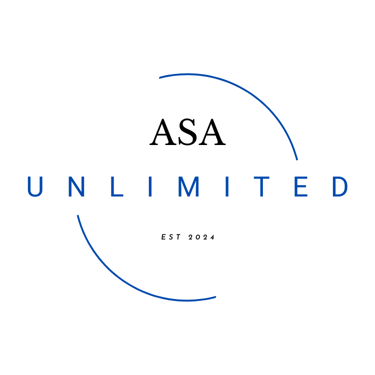Many Paths Home: A Beginner’s Guide to Meditation
Meditation isn’t about escaping the world. It’s about returning home to yourself. In the stillness between breaths, we find clarity, balance, and connection to what truly matters. Many Paths Home: A Beginner’s Guide to Meditation invites you to pause amid life’s constant motion and rediscover your center. Whether you seek calm, creativity, emotional reset, or transcendence, meditation offers a doorway inward. Explore the different types, learn how to begin, and let the journey back to yourself unfold. #MeditationJourney #MindfulnessMeditation #LovingKindnessMeditation #BodyScanMeditation #MantraMeditation #ZenMeditation #TranscendentalMeditation #YogaNidraMeditation #PassageMeditation #BoxBreathing #InnerPeace #SelfAwareness #PersonalGrowth #Stillness #AuthenticSoulAwakened
ACTIONINNER HARMONYRESOURCESFOCUS


10/13/25
Many Paths Home: A Beginner’s Guide to Meditation
Meditation is the practice of coming home to yourself. It is the art of pausing in motion. In a world that constantly pulls your attention outward in dozens of different directions, it enables us to reconnect with our core. It’s not about forcing the mind into stillness, but about becoming more aware of our inner landscape that shapes our thoughts and emotions.
The effects of meditation can unfold in many ways: it can calm both body and mind, bring greater mental clarity, reset emotional balance, and open space for creativity to flow. For some, it supports deeper rest and more peaceful sleep; for others, it can even lift consciousness into a transcendental state, a place beyond thought where awareness simply is.
Below you will find a simple guide to:
The benefits of meditation
Several of the major types of meditation (and what they are best for)
Instructions for performing meditation:
Why Meditate? The Science-Backed Benefits
Here’s what consistent meditation practice can do for your brain, body, and mind:
Reduce stress and anxiety by lowering cortisol
Improve sleep by calming the nervous system
Sharpen focus and attention by strengthening the prefrontal cortex
Regulate emotions by building awareness and reducing reactivity
Enhance creativity and problem-solving by giving your brain space
Improve physical health (lower blood pressure, support immunity)
Several of the Major Types of Meditation (for each work on breathing from your belly rather than your chest)
1. Mindfulness Meditation
Best for: Stress reduction, emotional regulation, present-moment awareness
What it is: Focused attention on the breath or body while observing thoughts without judgment.
How to Practice:
Duration: 10 - 20 minutes
Breath: Inhale 4s, pause 1s, exhale 6s
Posture: Sit upright, close eyes or soften gaze
Focus: Breath at the nostrils or chest
Visualization: A wave rising in your lower belly (inhale), falling (exhale)
Distraction Handling: Label thoughts (“thinking”), gently return
2. Loving-Kindness Meditation
Best for: Compassion, forgiveness, emotional healing
What it is: Repeating phrases of goodwill toward self and others.
How to Practice:
Duration: 15 - 25 minutes
Breath: Inhale 4s, exhale 6s
Sequence:
Yourself (5 min)
Loved one (5 min)
Neutral person (5 min)
Difficult person (5 min)
All beings (5 min)
Phrases:
“May I/you be happy. May I/you be safe. May I/you be healthy. May I/you live with ease.”
3. Body Scan Meditation
Best for: Tension release, sleep support, reconnecting to the body
What it is: Slowly moving awareness through each part of the body.
How to Practice:
Duration: 15 - 30 minutes
Breath: Inhale 4s, exhale 8s
Position: Lie on your back or recline comfortably
Scan: Start at the crown → face → shoulders → chest → belly → legs → feet
Observe: Tingling, tension, warmth (no need to change anything)
4. Mantra Meditation
Best for: Mental clarity, reducing overthinking, anchoring the mind
What it is: Silently repeating a word, phrase, or sound to stay centered.
How to Practice:
Duration: 15 - 25 minutes
Breath: Inhale 5s, exhale 5s
Simple Mantras: “Om”, “Peace”, “Let go”, “So Hum”
Instructions: Repeat silently with each breath. Let the sound guide you inward. Gently return when distracted.
5. Zen Meditation
Best for: Insight, non-reactivity, self-discipline
What it is: A traditional seated meditation from Zen Buddhism.
How to Practice:
Duration: 20 - 30 minutes
Breath: Inhale 5s, exhale 7s
Posture: Sit on a cushion or bench, spine straight
Eyes: Half open, gazing down
Technique: Observe breath at belly. Let thoughts pass. Do nothing but sit.
6. Transcendental Meditation
Best for: Deep rest, stress relief, transcending thought
What it is: A silent mantra meditation taught via certified instructors. The mantra is assigned personally and kept private.
How to Practice:
Proper TM instruction is recommended through a certified teacher.
Duration: 20 minutes, twice daily
Breath: Inhale 4s, exhale 6s
Mantra: Personal and not shared (you receive it in TM training)
Instructions: Silently repeat the mantra with eyes closed. Let thoughts come and go. No focus or effort required.
7. Yoga Nidra / NSDR (Non-Sleep Deep Rest)
Best for: Recharging energy, sleep supplement
What it is: Guided relaxation lying down, cycling through body awareness, breath, and visualization.
How to Practice:
Duration: 15 - 30 minutes
Breath: Inhale 4s, exhale 8s
Position: Lie flat, palms up, eyes closed
Use guided audio (YouTube, Insight Timer)
Stages:
Body rotation: mentally scan each area (10 - 15 min)
Breath awareness or counting (5 min)
Visualization (forest, light, ocean, etc.)
Positive affirmation (e.g., “I am calm and clear”)
8. Passage Meditation
Best for: Resilience, values, balance, focus
What it is: Repeating a memorized passage from spiritual or philosophical texts.
How to Practice:
Duration: 30 minutes
Breath: Inhale 4s, exhale 6s
Passages (examples):
Prayer of Saint Francis of Assisi (“Lord, make me an instrument of Thy peace …”)
Psalm 23 “Be still and know that I am God.” (“The Lord is my shepherd; I shall not want …”)
“The Twin Verses” Dhammapada (1-2) (“All that we are is the result of what we have thought…”)
“The Shvetashvatara Upanishad (6.11–6.16) (“There is one supreme ruler, the inmost Self of all beings…)
Instructions:
Sit with good posture
Recite the complete passage silently and slowly (and then repeat until the time duration is completed)
If distracted, restart from the beginning
Optional: brief reflection afterward (2 - 5 minutes)
9. Box Breathing (Standard Breathwork Meditation)
Best for: Calm, nervous system regulation, high-stress situations
What it is: A structured breathing technique used by Navy SEALs, athletes, and therapists to calm the body and sharpen focus.
How to Practice:
Duration: 5 - 15 minutes
Breath pattern:
Inhale 4 sec
Hold 4 sec
Exhale 4 sec
Hold 4 sec
(Repeat for 10 - 20 rounds)
Posture: Sit or lie down comfortably
Visualization: Imagine tracing the four sides of a box with each step
Tip: Count silently in your head to stay engaged
A Moment of Peace
There isn’t a single “best” way to meditate. It really depends on your goals and what feels right for you. Explore a few different methods and continue with the one that resonates most. What matters most isn’t the style, but the practice itself. Consistency is where the real growth happens; the more you show up, the deeper the benefits become.
From my own experience, something powerful shifts after about twenty to twenty-five minutes: a deeper calm, a quiet clarity. Try easing your way there over time. Start small, maybe five minutes a day, and add a minute every few days. Before long, meditation may become one of the most grounding and fulfilling moments of your day.
